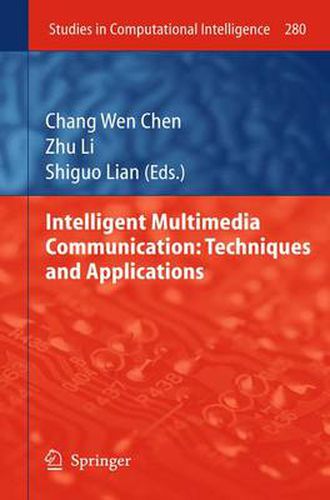Readings Newsletter
Become a Readings Member to make your shopping experience even easier.
Sign in or sign up for free!
You’re not far away from qualifying for FREE standard shipping within Australia
You’ve qualified for FREE standard shipping within Australia
The cart is loading…






This title is printed to order. This book may have been self-published. If so, we cannot guarantee the quality of the content. In the main most books will have gone through the editing process however some may not. We therefore suggest that you be aware of this before ordering this book. If in doubt check either the author or publisher’s details as we are unable to accept any returns unless they are faulty. Please contact us if you have any questions.
Multimedia data are used more and more widely in human being’s life, e.g., videoconferencing, visual telephone, IPTV, etc. Nearly most of the applications need multimedia transmission techniques that send multimedia data from one side to another side and keep the properties of efficiency, robustness and security. Here, the efficiency denotes the time cost of transmission operations, the robustness denotes the ability to survive transmission errors or noises, and the security denotes the protection of the transmitted media content. Recently, various intelligent or innovative techniques are invented, which bring vast performance improvements to practical applications. For example, such content transmission techniques as p2p, sensor network and ad hoc network are constructed, which adaptively use the peers’ properties to improve the network’s resources. Multimedia adaptation techniques can adjust the multimedia data rate in order to compliant with the network’s bandwidth. Scalable encryption techniques can generate the data stream that can be correctly decrypted after bit rate conversion. Ubiquitous multimedia services make the user share any kind of content anywhere.
The book includes fourteen chapters highlighting current concepts, issues and emerging technologies. Distinguished scholars from many prominent research institutions around the world contribute to the book. The book covers various aspects, including not only some fundamental knowledge and the latest key techniques, but also typical applications and open issues. For example, the covered topics include the present and future video coding standards, stereo and multiview coding techniques, free-viewpoint TV techniques, wireless broadcasting techniques, media streaming techniques, wireless media transmission techniques and systems, and User-Generated Content sharing.
$9.00 standard shipping within Australia
FREE standard shipping within Australia for orders over $100.00
Express & International shipping calculated at checkout
This title is printed to order. This book may have been self-published. If so, we cannot guarantee the quality of the content. In the main most books will have gone through the editing process however some may not. We therefore suggest that you be aware of this before ordering this book. If in doubt check either the author or publisher’s details as we are unable to accept any returns unless they are faulty. Please contact us if you have any questions.
Multimedia data are used more and more widely in human being’s life, e.g., videoconferencing, visual telephone, IPTV, etc. Nearly most of the applications need multimedia transmission techniques that send multimedia data from one side to another side and keep the properties of efficiency, robustness and security. Here, the efficiency denotes the time cost of transmission operations, the robustness denotes the ability to survive transmission errors or noises, and the security denotes the protection of the transmitted media content. Recently, various intelligent or innovative techniques are invented, which bring vast performance improvements to practical applications. For example, such content transmission techniques as p2p, sensor network and ad hoc network are constructed, which adaptively use the peers’ properties to improve the network’s resources. Multimedia adaptation techniques can adjust the multimedia data rate in order to compliant with the network’s bandwidth. Scalable encryption techniques can generate the data stream that can be correctly decrypted after bit rate conversion. Ubiquitous multimedia services make the user share any kind of content anywhere.
The book includes fourteen chapters highlighting current concepts, issues and emerging technologies. Distinguished scholars from many prominent research institutions around the world contribute to the book. The book covers various aspects, including not only some fundamental knowledge and the latest key techniques, but also typical applications and open issues. For example, the covered topics include the present and future video coding standards, stereo and multiview coding techniques, free-viewpoint TV techniques, wireless broadcasting techniques, media streaming techniques, wireless media transmission techniques and systems, and User-Generated Content sharing.